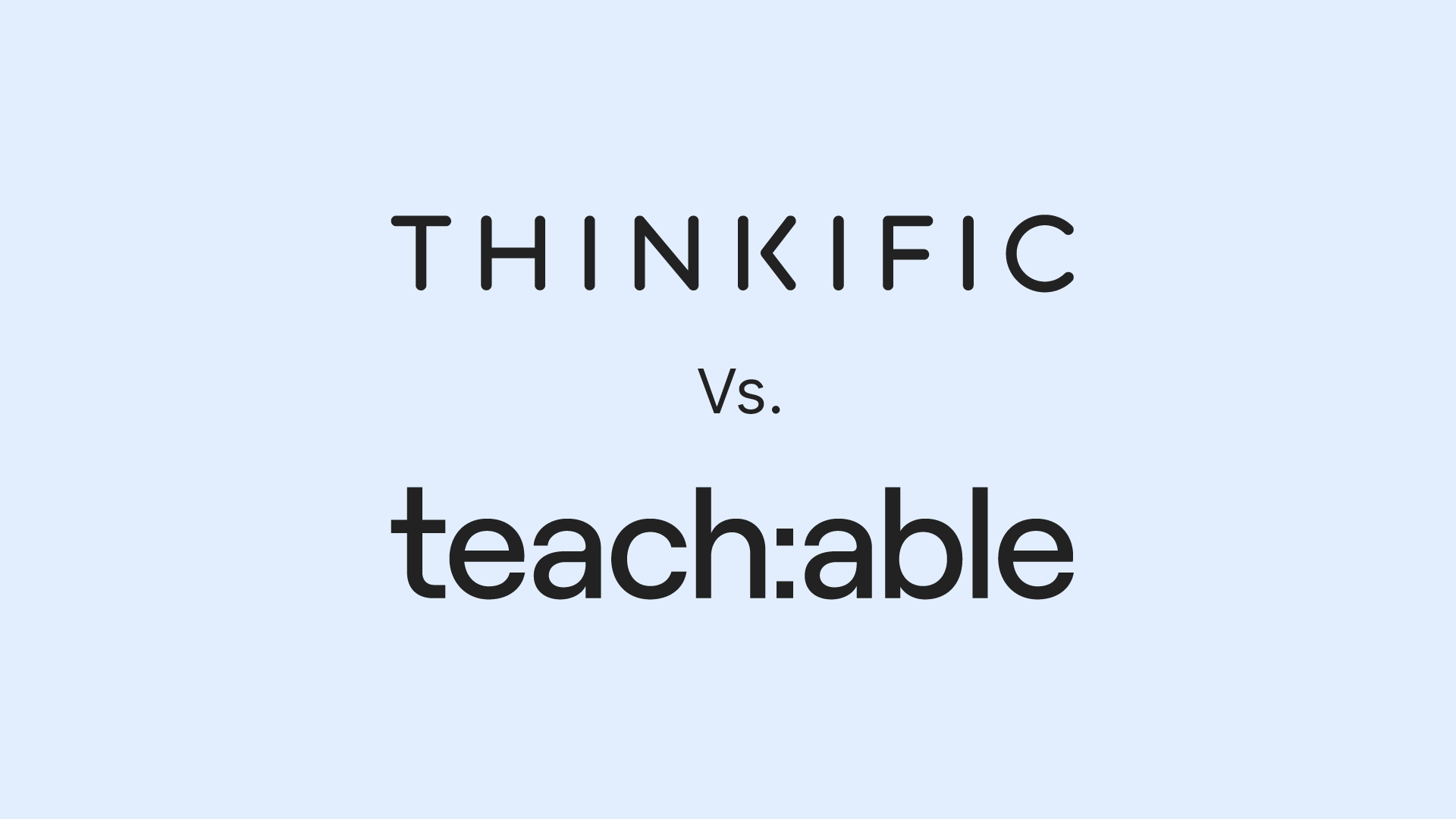|
Getting your Trinity Audio player ready...
|
In today’s world, there are many ways to earn money online. But not everyone knows how to create their own course or product. So, we have created this step by step guide on how to create an online course.
Online courses are becoming more and more common today. The number of online learners has increased exponentially over the last decade. According to Statista, in 2018, around 4.5 million students enrolled in at least one online course worldwide.
Creating an online course is a fantastic way to share your knowledge and build a strong brand while generating passive income. You don’t even have to teach it yourself. There are plenty of people willing to do it for you.
And most importantly, how do you start creating one? If you’re looking to learn how to create an online course and share your expertise, we’ve got some tips to help you along the way.
What are the 10 Steps to Creating a Successful Online Course?
Here are the 10 steps to follow to create an online store.
- Choose the Right Topic or Subject Matter
- Test if your Idea fits
- Do some Extensive Research on the Topic
- Create a course Outline
- Start Creating your Course Content
- Put your course online and Create your Course Website
- Start Selling your Online Course
- Market your Online Course
- Get Feedback from your Learners
- Launch your Online Course and Continue
1. Choose the right subject matter
If you want to get into online course creation, you must choose the right subject matter. This is where the course creation process begins for you. Picking the right topic will allow you to create your course content much more easily and structure it to engage your audience.
You don’t want to write about topics that are too broad because it won’t attract readers. Pick a niche that people will quickly understand and grow from there. You might already be an expert in a specific topic, start from there.
There are many ways to narrow down your subject matter. One way is to focus on one area of expertise. For example, if you’re a blogger about how to make money online, you could specialize in teaching an online course about “Making money blogging”.
Or, if you’re a writer, you might focus on fiction writing. Another option is to research popular subjects within your niche. What are trending topics among your social media connections? For instance, Google Trends can show you the trending topics on Google search.
Another way to narrow down your subject is to look at what people are searching for. This is called keyword research. Several tools can help you conduct keyword research. Some of the best include SEMrush, SE Ranking, and Ahrefs.
The next step is to determine whether there’s enough demand for your topic. Is there a lot of interest in your niche? Are people looking for information about it? Do you know anyone who needs your product or service? Once you’ve determined that there’s a market for your idea, you can move forward with your plan to launch your online.
2. Test if your Idea fits
Creating an online course requires a ton of hard work and effort. You’ll want to make sure that you’re ready for this before you start building your course. To do this, you’ll want to test it out first.
A good way to test your idea is to build a landing page for it. This allows you to see how well your product resonates with potential customers. If you don’t like what you see, you can always change things around to improve upon it.
You’ll want to include a short description of the course along with some compelling images to attract interest. Once you’ve built the page, you’ll want to check out these fully customized landing page templates to help you get started.
There are plenty of options to choose from, including ones that allow you to customize everything from the layout to the colors to the fonts used throughout the design.
Once you’ve got your landing page set up, you’ll want to add CTAs to encourage visitors to take action. These could be anything from inviting them to subscribe to your email list to purchase a premium version of your course.
Whatever you decide to offer, make sure that it’s something that you’d be willing to sell. Otherwise, no one will buy it!
3. Research the topic extensively
Whether you’re already an expert in your industry or are looking forward to becoming one, now is the time for you to learn every aspect of the subject matter. You don’t want to miss out on anything because you didn’t take the time to study each and every detail.
To thoroughly learn, go beyond what course participants will easily find on search engines. Instead, look for a wide range of different sources on the subject, including books, blogs, forums, online courses, videos, etc. This way, you’ll be able to discover things that no one else knows about.
Do keyword research in order to understand what types of keywords people are searching for on the topic. Once you have done this, you can gain a better sense of what questions your audience might be interested.
Keep your eyes open for any related topics within your niche. If you notice that certain keywords are being searched together, consider creating a separate blog post on those topics. From this, you could potentially build a whole section around them.
4. Create a course outline
Now that you know what your goals are, it’s time to start thinking about how you’re going to achieve those goals. You don’t necessarily have to come up with a detailed schedule of exactly what you’ll teach in each lesson, but do think about where you’d like to take your students over the next few months.
Course outlines are essential tools for teaching online courses. They provide structure, clarity, organization, and direction to your lessons. In addition, they serve as a guide for both you and your students.
Writing a course outline forces you to think about how you want to present your material. You might decide to use a particular format, such as lecture notes, quizzes, assignments, etc., to organize it. Or you could write out the entire syllabus.
Whatever method you choose, make sure that you include the following four elements in your course outline:
Objectives
A clear statement of the learning outcomes that your students will achieve. This helps them understand why they are taking your class and gives them something to work toward.
Introduction
An overview of the topic that introduces the key concepts and terms. For example, a good intro paragraph explains the difference between a course outline and a curriculum.
Summary
A brief review of the main points covered in each unit. This lets your students know where they stand at the end of the course.
Assignment/Activity
Describe the assignment or activity that follows the summary. This provides a sense of closure and allows your students to apply what they’ve learned.
As you build out your outline, keep in mind that teaching is about guiding people through an idea, step-by-step. When you teach something, you’re trying to help your learners understand why you believe something is true. This means that you need to explain concepts clearly, and guide your audience through the steps necessary to reach that understanding.
In addition to defining objectives for each lesson, it’s important to put some thought into the overall structure of your course. If you feel like your course is too long, consider breaking it up into multiple parts. Another option is to give yourself a deadline for finishing each part. While there’s no hard rule regarding how many lessons you should have, I recommend having somewhere around 10–15.
If you find yourself struggling to decide what to include in each lesson, ask yourself questions such as: What am I most passionate about? How does my topic relate to the lives of others? What skills do I wish someone had taught me when I was younger? Once you’ve answered these questions, you’ll be able to figure out what to focus on in each lesson.
5. Start Creating your Course Content
When it comes to learning something new, there are many different ways to do it. You could read a book about the topic, watch a video tutorial, or even take an online course. But what works best for one person might not work for another. So how do we know what type of material will help someone learn better?
To get started create a structure for your modules and course plan. You can start by creating a list of topics that interest you. Then, brainstorm ideas for each topic. Think about the types of things you would like to cover in each module.
Next, break down each topic into smaller chunks. Finally, look over your content outline and select the sections that seem most relevant to your topic. You can use these tips from Thinkific to plan your online course using Bloom’s taxonomy.
Now, let’s see how you can use data science techniques to determine what type of content will work best for each learner. This includes determining what types of videos, images, and texts will work best for your audience.
There are three main types of learners: visual, auditory, and kinesthetic. Visual learners tend to learn best when they see things written down. Auditory learners learn best when they hear things spoken out loud. And kinesthetic learners learn best when they experience things themselves.
With this information now you can start creating content for your course to feed into your course outline and structure.
Use the materials and content you have collected by following the course outline and structure to create your online course content. You can turn your course notes into videos, PowerPoint presentations, or PDF documents. Make sure you keep them interesting.
First, start with turning your notes into video and audio.
Filming your Online Course
When it comes to learning something new, there are many different ways to do it. You could read a book about the topic, watch a video tutorial, or even take an online course. But what works best for one person might not work for another. So how do we know what type of material will help someone learn better?
To get started create a structure for your modules and course plan. You can start by creating a list of topics that interest you. Then, brainstorm ideas for each topic. Think about the types of things you would like to cover in each module.
Next, break down each topic into smaller chunks. Finally, look over your content outline and select the sections that seem most relevant to your topic. You can use these tips from Thinkific to plan your online course using Bloom’s taxonomy.
Now, let’s see how you can use data science techniques to determine what type of content will work best for each learner. This includes determining what types of videos, images, and texts will work best for your audience.
There are three main types of learners: visual, auditory, and kinesthetic. Visual learners tend to learn best when they see things written down. Auditory learners learn best when they hear things spoken out loud. And kinesthetic learners learn best when they experience things themselves.
With this information now you can start creating content for your course to feed into your course outline and structure.
Use the materials and content you have collected by following the course outline and structure to create your online course content. You can turn your course notes into videos, PowerPoint presentations, or PDF documents. Make sure you keep them interesting.
First, start with turning your notes into video and audio.
Editing your Videos
The editing process is one of the most important parts of making a good video. If you don’t know how to edit a video properly, it could end up looking like garbage. But there are some things you can do to make sure your next video looks professional.
After you’ve shot your content, invest some serious time editing your raw footage into a great video course. Here’s how to do it.
There are many free video editing programs available, including iMovie, Lightworks, and more. But we recommend starting with something simple like Flexclip.
And don’t forget to add titles, like the name or topic of the course, and video captions for accessibility.
Also, you could hire your video editing professionals via sites like Fiverr, or just use free software such as Camtasia Studio to make great-looking videos. Or you could simply shoot your own footage and edit it together yourself.
Whatever method you choose, remember that you don’t need a lot of money to begin producing high-quality online courses. All you really need is a computer, some basic tools, and maybe a few accessories.
Now let’s take a look at what else you can do to improve your video courses.
Class assignments
The best way to teach is to give students something to do. This can be done in many different ways, including creating a lesson plan, assigning homework, or giving out tasks. In some cases, it might even involve nothing more than having students write down what they learned during class.
But there are times when you want to go beyond just teaching and actually help students learn. For example, if you’re teaching a course about how to use Excel, you could assign a project where students build a spreadsheet and present it to the class.
Or maybe you’re teaching a course on web design and want to give students practice writing HTML code. Whatever the case, there are plenty of ways to motivate students and keep them engaged in your classes. Here are four tips for making assignments work for you.
Make Assignments Work for You
When designing your assignment, think about why you’re teaching the course. What do you hope to accomplish? Are you trying to teach students about a particular topic? Do you want to encourage creativity?
If so, try looking for creative solutions to problems. Sometimes students come up with ideas that you never thought of. And sometimes they’ll surprise you with their ability to solve a problem. Either way, you’ve got an opportunity to see things from a new perspective.
Give Students Something To Do
Assigning a task doesn’t always mean handing out a worksheet or quiz. Many types of assignments don’t require paper or pencil. Some examples include:
- Online Quizzes – Use tools like Kahoot to create interactive quizzes that allow students to answer questions without ever needing to open a browser window.
- Homework – Have students complete projects outside of class, either individually or in groups. They can take pictures, write stories, draw comics, etc.
Bring your course online
The first step in getting your course online is to find the best online course platform for your course. We have compiled a list for you on this list of the best online course platforms.
Once you’ve found a platform that fits your needs, you need to decide whether you want to host the course yourself or use a third-party service. If you choose to self-host, you will need to purchase a domain name and set up hosting services.
You may also want to consider using a learning management system (LMS) to manage student accounts and grades. These systems often offer additional features such as discussion boards, forums, and other social media integration.
Once your course is online it is now ready to accept learners into the online course program. This brings us to the next step, selling your online course.
Sell your online course
The average price of an online course is $137 according to a study by Podia. But selling your online course is not all about pricing. Let’s look at how you can go about understanding who to sell to and how.
There are many ways to package your course, you can do individual lessons, channel subscriptions, or package the lesson into different paid plans.
Individual Lessons For Rent Or Purchase
If you just want to make money from teaching people how to use your product, consider renting out individual lessons. You could offer lessons for $10 per hour or charge $100 for a half-day lesson. If you decide to go down this route, it’s important to note that you don’t necessarily need to provide your own equipment. Many platforms like Udemy and Skillshare allow instructors to access tools such as laptops and microphones.
Channel Subscription
Another option is to set up a channel subscription. With this model, you pay a monthly fee to access a library of videos. Depending on the type of content you produce, you might be able to charge anywhere from $5 to $50 per month.
Paid Plans
The third option is to sell paid plans. In this scenario, you create packages of lessons that cost either a fixed amount or a percentage of revenue. For example, you could charge $200 for a package of 10 lessons or 2% of sales.
How to price your online course
After filming your content you might ask yourself how to set the prices and rates for your course. There are many factors to consider when pricing your course. One important factor is to make sure that you’re charging enough money to cover your costs while still making a profit. You’ll want to take into consideration things like creation time, marketing efforts, and competition.
The following are some tips to help you figure out how to set your course fee:
- Find competitors’ prices: Start by doing a quick audit. This will give you a general idea of what courses cost on your subject matter. If there are no similar courses, you can use competitor prices as a starting point.
- How long did it take to create the course? Consider creating a rough timeline for each part of the process. For example, if you spent several hours editing videos, think about how much time you spent on each video. Then total up the amount of time and divide it by the number of videos you produced. This gives you an estimate of how long it takes to produce one video. From there, multiply the amount of time by the number of videos needed to complete your course.
- What does the course include? Take a look at the course outline and see where you could trim down the length of the course without losing information.
- Marketing effort: Think about how much work went into promoting your course. Did you spend time writing blog posts, posting on social media, or reaching out to influencers? Multiply those numbers together to get a rough estimate of how much time you put into promotion.
- Competition: Look around and find out how much people charge for similar courses. If you don’t have any competitors, you can start by looking at the average course fee on your topic.
Market your content
You’ve invested a significant amount of creative effort into creating an online course and now you need to promote it and get people to register for it. The first type of promotion that you should consider is the free one.
Free promotions are usually very effective because they’re easy to do and don’t require any money upfront. They also give you instant results.
In my experience, there are many ways to market your online courses:
Email Marketing: Send email marketing campaigns, including promotional emails, discount offers, and early-bird promotions.
Social Media: Promote your course on social networks like Facebook, Twitter, Instagram, and LinkedIn.
Affiliate Programs: Use affiliate programs to sell your online course, buy offering affiliates a percentage of each sale.
Gather feedback
Ask students to provide feedback after each workshop. This helps you identify areas where there are gaps in knowledge, and it gives you insight into how effective the course material is. You can use SurveyMonkey or Google Forms to gather feedback.
Use survey tools like FormBuilder to collect feedback. These allow you to quickly build surveys and analyze the data collected. If you want to dig deeper into the data, you can export the information to Excel or another spreadsheet program.
Analyze the results to see if there are trends or patterns among the comments. For example, did students mention certain topics over others? Did some groups of people mention one thing while others mentioned something completely different? This can help you determine whether you need to add additional content to the next workshop.
Cultivate a learning community
Online communities foster a sense of membership among members, which leads them to feel part of something bigger than themselves. They are able to develop relationships with each other and gain knowledge from one another. This helps them become better learners and ultimately retain information longer.
Create a private Facebook group or twitter list for your learners. You could even use it to communicate with your teachers.
Use online communication platforms like Slack, Discord, or Zoom for your learners. These tools allow you to easily chat with your students to keep them engaged and encouraged to learn even more.
Social media groups help create a feeling of belonging and support among your learners.
Create your Online Course Today and Share you Knowledge
If you want to start creating courses, you have to decide why you want to make them. What is it about your experience that you want to impart to others? Why does your audience benefit from having access to your information? How can you help people?
Once you have identified your purpose, you must figure out what you know and where you could add value. Look around you; ask questions. Who else has something to offer? Are there gaps in the marketplace? Do you see opportunities to solve problems?
In addition to knowing what you know, you’ll need to find ways to communicate effectively. You might already be good at drawing, writing, speaking, or teaching. Or maybe you’ve been working on improving your communication skills over time. Whatever your strengths are, you can use them to build a course.
You don’t necessarily need to be a teacher to start making courses. In fact, many successful creators started out simply sharing their passions. But once you understand the basics of course creation, you can take your talents further.






